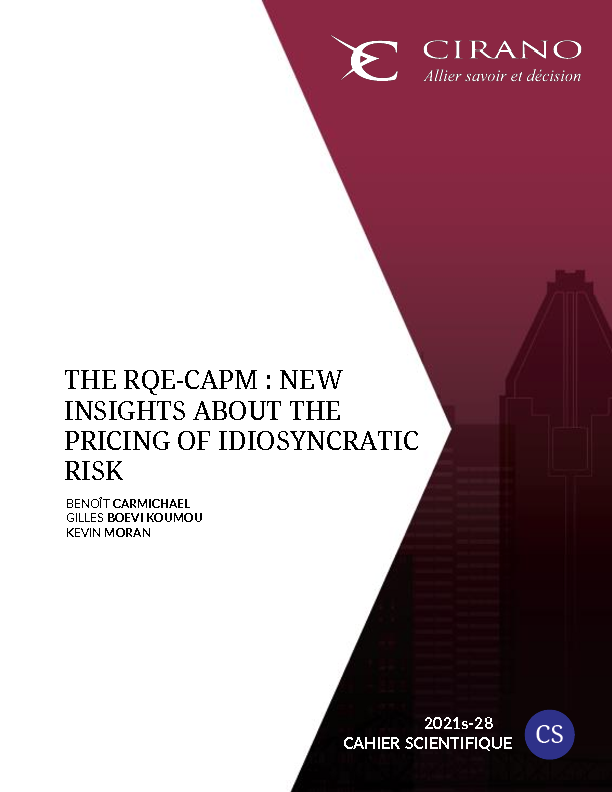The RQE-CAPM : New insights about the pricing of idiosyncratic risk
We use an equivalent form of Markowitz's mean-variance utility function, based on Rao's Quadratic Entropy (RQE), to enrich the standard capital asset pricing model (CAPM), both in the presence and in the absence of a risk-free asset. The resulting equilibrium, which we denote RQE-CAPM, offers important new insights about the pricing of risk. Notably, it reveals that the reason for which the standard CAPM does not price idiosyncratic risk is not only because the market portfolio is law of large numbers diversifed but also because the model implicitly assumes agents' total risk aversion and their correlation diversifcation risk preference balance each other exactly. We then demonstrate that idiosyncratic risk is priced in a general RQE-CAPM where agents' total risk aversion and their correlation diversifcation risk preference coeffcients are not necessary equal. Our general RQE-CAPM therefore offers a unifying way of thinking about the pricing of idiosyncratic risk, including cases where such risk is negatively priced, and is relevant for the literature assessing the idiosyncratic risk puzzle. It also provides a natural theoretical underpinning for the empirical tests of the CAPM or the pricing of idiosyncratic risk performed in some existence studies.




